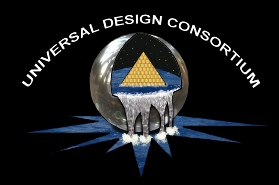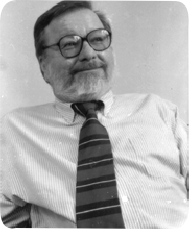



Universal design is a relatively new paradigm that emerged from "barrier-
As life expectancy rises and modern medicine has increased the survival rate of those with significant injuries, illnesses and birth defects, there is a growing interest in universal design. There are many industries in which universal design is having strong market penetration but there are many others in which it has not yet been adopted to any great extent.
Universal design is a part of everyday living and is all around us. The "undo" command in most software products is a good example. Color-
The Principles of Universal Design
"The authors, a working group of architects, product designers, engineers and environmental design researchers, collaborated to establish the following Principles of Universal Design to guide a wide range of design disciplines including environments, products, and communications."
1. Equitable use
2. Flexibility in use
3. Simple and intuitive
4. Perceptible information
5. Tolerance for error
6. Low physical effort
7. Size and space for approach and use
(from the Center for Universal Design)
These principles are broader than that of accessible design.
Examples
· Ramps at A-
· Smooth ground surfaces of entranceways, without stairs
· Wide interior doors and hallways
· Lever handles for opening doors rather than twisting knobs
· Light switches with large flat panels rather than small toggle switches
· Buttons on control panels that can be distinguished by touch
· Bright and appropriate lighting, particularly task lighting
· Auditory output redundant with information on visual displays
· Visual output redundant with information in auditory output
· Contrast controls on visual output
· Use of meaningful icons as well as text labels
· Clear lines of sight (to reduce dependence on sound)
· Volume controls on auditory output
· Speed controls on auditory output
· Choice of language on speech output
· Ramp access in swimming pools
· Closed captioning on television networks
Design standards
In October 2003, representatives from China, Japan, and South Korea met in Beijing and agreed to set up a committee to define common design standards for a wide range of products and services that are easy to understand and use. Their goal is to publish a standard in 2004 which covers, among other areas, standards on containers and wrappings of household goods (based on a proposal from experts in Japan), and standardization of signs for public facilities, a subject which was of particular interest to China as prepared to host the 2008 Summer Olympics.

1941-
Ron Mace, founder and program director of
The Center for Universal Design, passed away
on June 29, 1998 in his home in Raleigh.
He was 56 years old.
Design Pioneer and Visionary of Universal Design Ron Mace was a nationally and internationally recognized architect, product designer and educator whose design philosophy challenged convention and provided a design foundation for a more usable world.
He coined the term "universal design" to describe the concept of designing all products and the built environment to be aesthetic and usable to the greatest extent possible by everyone, regardless of their age, ability, or status in life. He was also a devoted advocate for the rights of people with disabilities which is reflected in his work.
He graduated from the School of Design at North Carolina State University in 1966 with a Bachelor's degree in architecture. After four years of practicing conventional architecture, he became involved in the effort to produce the first building code for accessibility in the nation. This code became mandatory in North Carolina in 1973 and served as a model for other states. Ron's pioneering work in accessible design was instrumental in the passage of national legislation prohibiting discrimination against people with disabilities, the Fair Housing Amendments Act of 1988 and The Americans with Disabilities Act of 1990.
In 1989, Ron established the federally-
Ron was a Fellow of the American Institute of Architects and received the Distinguished Service Award of the President of the United States in 1992 for distinguished service in promoting dignity, equality, independence and employment of people with disabilities.
